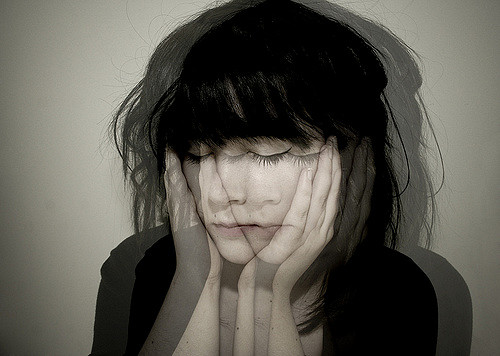A recent study published in Schizophrenia Bulletin examines patterns of mental health care use in the 12 months after patients in the US receive an initial diagnosis of psychosis. The study estimates that 12-month mortality for individuals who had received psychosis diagnosis was 24 times greater than that of the general population. Moreover, in the year following the initial diagnosis of first-episode psychosis (FEP), 61% of the individuals with psychosis did not fill prescriptions for antipsychotics and 41% did not receive any individual psychotherapy services.
“Recent reports suggest unacceptably long delays in the initiation of psychosis treatment after the onset of symptoms, questionable psychotropic prescription practices in approximately 40% of cases, and elevated cardio-metabolic risk factors and abnormalities among FEP patients that go largely untreated”

Past research has found that people diagnosed with “schizophrenia” have significantly higher mortality rates than the general population, often due to co-occurring medical issues including cardiovascular disease, diabetes, and suicide. In fact, research conducted in the UK has demonstrated that the mortality gap between the general population and individuals diagnosed with bipolar and schizophrenia is widening. Intervention and treatment efforts have shifted to early intervention programs which have demonstrated improved outcomes including a reduction in suicide risk.
However, the authors of this study point out that the “United States has been slower to focus on early intervention” which has resulted in a lack of knowledge regarding how persons who have experienced a first-episode of psychosis utilize treatment. To fill this gap, the authors of the present study looked at longitudinal patterns of outpatient treatment, inpatient treatment, emergency room visits, and mortality rates in a national cohort of individuals who had experienced a first-episode of psychosis.
Individuals with an inpatient, emergency, or outpatient visit that had received a diagnosis of schizophrenia, brief psychotic disorder, or psychotic disorder not otherwise specified (NOS) between the ages of 16-30 were identified. Information was gathered on mortality within a year of receiving a psychosis diagnosis, use of pharmacotherapy, and health service use including outpatient, inpatient, and emergency care.
A total of 1357 individuals were included. 85% of patients were under 25 years of age when they received the initial psychosis diagnosis and 61% of those included were male.
12-month mortality was 2%, compared to <.1% in the general population. Those who had a later onset (after age 25) of psychosis had higher rates of mortality than those who received the diagnosis between 16 and 20 years of age. Within this cohort, mortality rates for the 16-20 age range were 8 times that of the general population, 21 times the rate of the general population for the 21-25 group, and 54 times the rate in the 26-30 group.
Regarding pharmacotherapy, 58.5% of prescriptions filled were psychotropic medication; 23.3% of the prescriptions were for antipsychotics, 14.5% for antidepressants, 12.2% for mood stabilizers and anti-convulsants, and 5.9% for anxiolytics. The remainder were for non-psychotropic drugs and a small number of ADHD medications. Interestingly, only 36% of patients in the cohort had received any medication management health treatment in the year following the initial diagnosis.
69% of individuals had at least one visit with a mental healthcare provider for medication management or psychotherapy and on average one outpatient contact per month. 60% of the cohort had at least one session of psychotherapy.
Regarding inpatient care, 23% had been hospitalized the year following the initial diagnosis of psychosis. Those who were first diagnosed after age 25 were less likely to be hospitalized than the younger patients.
The limited use of psychosocial treatment highlighted in this study point to the flaws in the current response and approach to treatment for persons diagnosed with psychosis. The authors note that these “findings raise substantial concerns about conditions for young people experiencing psychosis in the United States. . . only individuals over 70 years of age have all-cause 12-month mortality approaching the rates we observed among young psychosis patients here.”
Additionally, it should be noted that individuals accounted for in this study had to have commercial insurance (e.g not Medicaid/CHIP/Medicare), had to have had coverage for the entire 12-month period following the initial psychosis diagnosis, and had received a second psychosis-related diagnosis during the follow-up period. While this allowed for the researchers of this study to have slightly more confidence in the homogeneity of the sample, the resulting estimates may be conservative measurements of mortality rates and health service utilization.
****
Schoenbaum, M., Sutherland, J. M., Chappel, A., Azrin, S., Goldstein, A. B., Rupp, A., & Heinssen, R. K. (2017). Twelve-Month Health Care Use and Mortality in Commercially Insured Young People With Incident Psychosis in the United States. Schizophrenia bulletin, sbx009. (Link)















Wait: 2%?
This is in Table 2 p. 4.
annual mortality rate, %:
Age 16-30: 1.968%
Age 16-20: 0.531%
Age 21-25: 2.125%
Age 26-30: 5.263%
It sounds absurdly high. It is of the same order of the Sakel cure.
“information on cause of death was not available for this study”
“the MPCD restricted access to data on cause and manner of death.”
“In the year after index, 61% of the cohort filled no antipsychotic prescriptions”
It’s weird. I live in France and I have never met a single psychotic who had not been prescribed neuroleptics.
“On an annualized basis, decedents had more hospitalizations than survivors (mean of 4.3 vs 1.3, respectively; P < .01), and more ED visits (mean of 4.2 vs 2.2; P < .01); while they had lower medication use in all psychotropic categories, as well as lower use of all types of psychotherapy."
This is very very weird. When you are forcibly hospitalized, you receive many more psychotropic drugs than when you are outside. In addition, many outpatients do not take the medications prescribed for them.
“MPCD data do not permit evaluation of possible causal links between low rates of treatment, the quality of services, and high mortality or manner of death among psychosis patients.”
This study is interesting but it contains gaps and quirks.
Report comment
The “first-episode psychosis” has existed since the dawn of time, especially through shamanism. How is it that nobody noticed that the FEPs killed 1 in 50 people in less than 1 year? Is there any ethnological documentation on shaman mortality? 1 in 20 people in the 26-30 age group!
I am sorry, but in ethnology, such mortality of shamans should have been seen as the nose in the middle of the figure. Schoenbaum’s numbers are very odd.
Report comment
AKATHISIA
In my Case the “Illness” stopped, the Disability stopped, and the Suicide Attempts stopped, (Permanently), when I discontinued the drugs.
EMAIL FROM ME TO:
My Doctor Surgery, Newton Medical, Central London, UK.
SUBJECT:- CHALLENGE TO DIAGNOSIS
On Thu, 27 Apr 2017 at 11:20,
Dear Partners/Manager,
Please examine the email and attachments (below).
I am keen to challenge the 1986 Irish Record Summary and any Mental Health Diagnosis you might hold on me.
Please record the exact location of the attachments to this email trail on your information system, so that I can refer to them at a later date.
(Resent Emails dated 29 August 2013 + 16 October 2014 – also contain more background information).
N.B.
I would ask for the Amendment of the 1986 Irish Record Summary (not Removal).
Please acknowledge receipt of this email trail + attachments.
Yours Sincerely
ME
(Forwarded Email From Me To Ombudsman)
On Thu, 16 Feb 2017 at 10:58,
Dear Kirsty,
Would you please pass this Information email on to Joanne Dawson. I apologise for any unpleasantness attached to the contents.
Please find attached:-
1. The Relevant Sections of my November 8, 1986 Handwritten Adverse Drug Reaction Warning Request Letter (3 pages).
2. The November 24, 1986 Irish Record Summary (2 pages) – With Requested Adverse Drug Reaction Warning Intentionally OMMITTED.
3. My January 13, 2012 ‘Near Fatal Modecate Experience’ – ‘Statement’, sent to;- Galway University, Depot Side Effect Research & Monitoring Team
4. Admitting Doctor, Dr Fadels description of me ‘on presentation’ at Galway in November 1980.
5. The November 1986 False Reassurance Letter From Dr Donlon Kenny
MALPRACTICE AT GALWAY 1986
Please examine and reconcile the attachments to this email and please read through the background information to the offending drugs for perspective. My recovery after April 1984 was as a result of discontinuing these drugs.
MALPRACTICE & DIAGNOSIS
I don’t think a Medical environment engaging in Malpractice can be trusted to represent a Medical Opinion.
BACKGROUND INFORMATION ON THE OFFENDING DRUG
Suicide
Associated with Akathisia and depot Fluphenazine (Modecate) treatment
https://www.researchgate.net/publication/16313058_Suicide_Associated_with_Akathisia_and_Depot_Fluphenazine_Treatment 1983 (Dr K Shearer, Dr A Frances..)
Dr A Frances went on to become Committee Chairperson to DSM 4.
Akathisia
I think I describe the symptoms of Akathisia fairly well in my November 1986 Handwritten ADR Request Letter + in My January 2012 ‘Statement’ to Galway University.
https://en.m.wikipedia.org/wiki/Akathisia
Wikipedia:- ‘Signs and Symptoms’
“….Neuro-psychologist Dr. Dennis Staker had drug-induced akathisia for two days. His description of his experience was this: “It was the worst feeling I have ever had in my entire life…”….”
Manufacturers Warning
Adverse Drug Reaction
https://dailymed.nlm.nih.gov/dailymed/archives/fdaDrugInfo.cfm?archiveid=7520
“…The side effects most frequently reported with phenothiazine compounds are extrapyramidal symptoms including pseudoparkinsonism, dystonia, dyskinesia, akathisia….”
Yours Sincerely
ME
Report comment
At present the UK Information Commissioners Office is obstructing entry of Evidence of AKATHISIA to my Medical Records.
Report comment
There’s nothing particularly unusual about this. It’s been known for decades that the suicide rate for “schizophrenics” is 20x higher than for the population at large. I first saw it mentioned in a first edition of How to Live With Schizophrenia, written 50+ years ago, which I read 40+ years ago.
Report comment